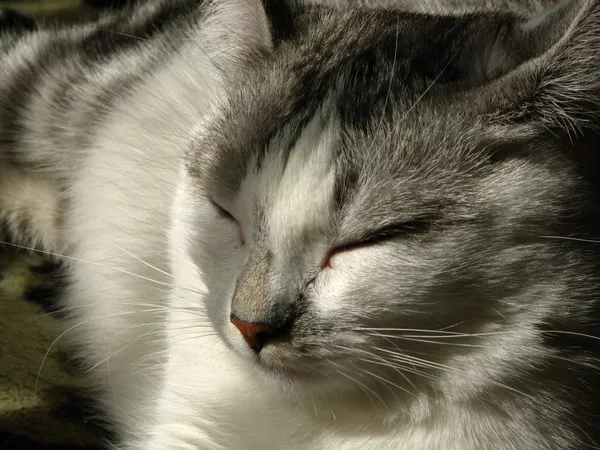Cats are known for their curiosity and agility, but sometimes their adventurous spirit can lead them into tricky situations, such as getting stuck in a tree. As a responsible cat owner, it’s essential to approach the rescue mission with care to ensure the safety and well-being of both your furry friend and yourself. In this article, we will explore five gentle and stress-free methods to safely retrieve your cat from a tree, focusing on minimizing anxiety and promoting a positive experience for your pet.
Understanding the Cat in a Tree Dilemma
Before delving into the rescue strategies, it’s important to understand why cats end up in trees and why they might find it challenging to come down on their own.
Curiosity and Climbing Instincts:
Cats are natural climbers, and their curiosity often drives them to explore high places. Once they climb up a tree, the challenge lies in descending safely, as their backward-facing claws make descending headfirst difficult.
Fear and Stress:
Once a cat realizes it’s stuck in a tree, fear and stress can set in, further complicating the situation. Cats may become hesitant or even more reluctant to descend due to the perceived danger.
Safety First:
It’s crucial to prioritize safety for both the cat and the rescuer. Climbing trees, especially tall ones, poses risks to human safety, and forcing or frightening the cat can lead to increased stress. Patience and a calm approach are key to a successful rescue.
Methods for Safely Retrieving Your Cat from a Tree
1. Create a Comforting Environment
Before attempting any physical rescue, create a comforting environment around the tree to help ease your cat’s stress. Bring familiar items such as the cat’s favorite blanket, toys, or even its regular food. Place these items at the base of the tree to encourage the cat to come down voluntarily.
Additionally, try calling your cat softly and using a reassuring tone. Familiar voices and comforting sounds can sometimes alleviate stress and encourage the cat to make the descent on its own.
2. Use Tempting Treats
Cats are often motivated by food, and using treats strategically can be an effective way to coax your cat down. Bring its favorite treats or wet food and place them on a plate or in a container near the base of the tree. The enticing aroma may encourage your cat to climb down to enjoy the treats.
Be patient and avoid making sudden movements or loud noises. Allow your cat to observe from a safe distance, and it may eventually decide to come down on its own accord.
3. Provide a Safe Descent Path
If your cat seems hesitant to come down, consider creating a makeshift ladder or platform to help facilitate a safer descent. Use sturdy materials such as wooden planks or a ladder and secure them against the tree trunk, forming a gradual slope.
Ensure the makeshift structure is stable and won’t slip or fall during the rescue attempt. Gently encourage your cat to use the provided path, but avoid physically forcing or pushing the cat as it may lead to increased stress.
4. Utilize a Cat Tree or Carrier
If you have a portable cat tree or carrier, consider bringing it to the base of the tree. Cats often feel secure in familiar spaces, and having an enclosed area can provide a sense of safety during the descent.
Place the cat tree or carrier at the base of the tree and open its door. Allow your cat to explore and, ideally, make its way down voluntarily. Be patient, and refrain from attempting to grab or pull the cat out forcefully.
5. Seek Professional Assistance
In cases where the cat is stuck in a particularly tall tree or displays signs of distress, it may be prudent to seek professional help. Contact local animal control services, fire departments, or specialized tree rescue services with experience in handling such situations.
Trained professionals have the necessary equipment and expertise to safely retrieve cats from tall trees without causing harm. While this option may involve some wait time, it ensures a secure and stress-free rescue for your feline companion.
Preventing Future Tree Climbing Incidents
Once your cat is safely back on solid ground, it’s essential to take measures to prevent future tree-climbing incidents. Consider the following preventive strategies:
Provide Enriching Indoor Spaces:
Enhance your cat’s indoor environment with cat trees, scratching posts, and engaging toys. By creating a stimulating indoor space, you can satisfy your cat’s natural instincts without the risks associated with outdoor climbing.
Supervise Outdoor Activities:
If you allow your cat outdoors, supervise its activities to ensure it doesn’t venture into tall trees or risky areas. Keep a watchful eye, especially if your cat tends to explore beyond the immediate surroundings.
Secure Outdoor Enclosures:
Invest in secure outdoor enclosures or cat patios that allow your feline friend to experience the outdoors safely. These enclosed spaces provide a controlled environment where your cat can climb and explore without the potential dangers of climbing high trees.
Regular Veterinary Check-ups:
Schedule regular veterinary check-ups to ensure your cat is in good health. Addressing any underlying health issues can contribute to reducing impulsive or risky behavior.
See Also: Cat Stuck in a Tree?
Conclusion
Rescuing a cat stuck in a tree requires a delicate approach that prioritizes the safety and well-being of the cat and the rescuer. By creating a comforting environment, using tempting treats, providing a safe descent path, utilizing a cat tree or carrier, and seeking professional assistance when needed, you can navigate the rescue process with patience and care.
Remember that each cat is unique, and their response to rescue attempts may vary. Patience, a calm demeanor, and a genuine understanding of your cat’s behavior are crucial elements in ensuring a stress-free experience. By taking preventive measures and creating a safe indoor environment, you can minimize the likelihood of future tree-climbing incidents, allowing your feline companion to enjoy a happy and secure life.


























